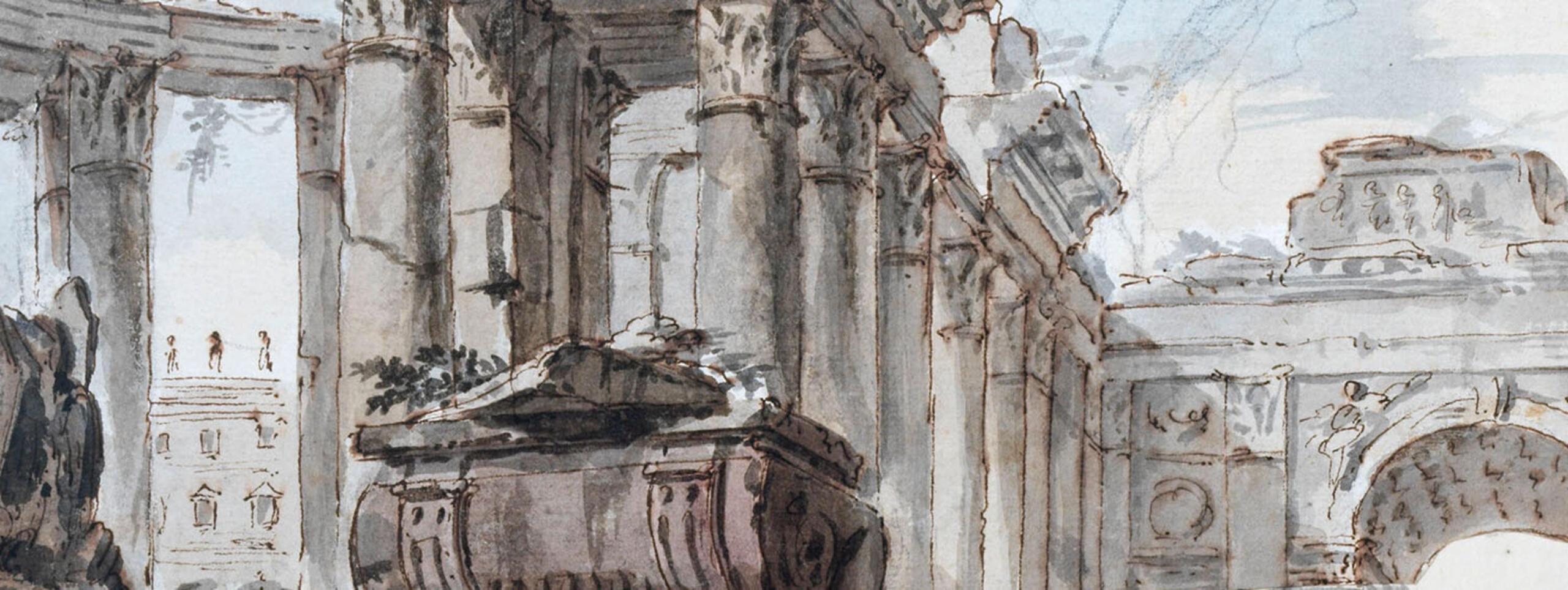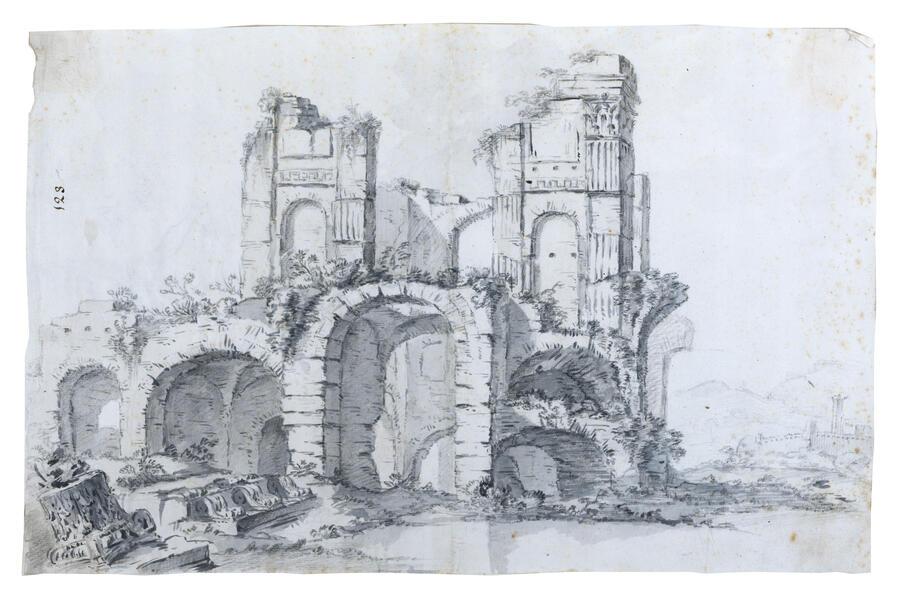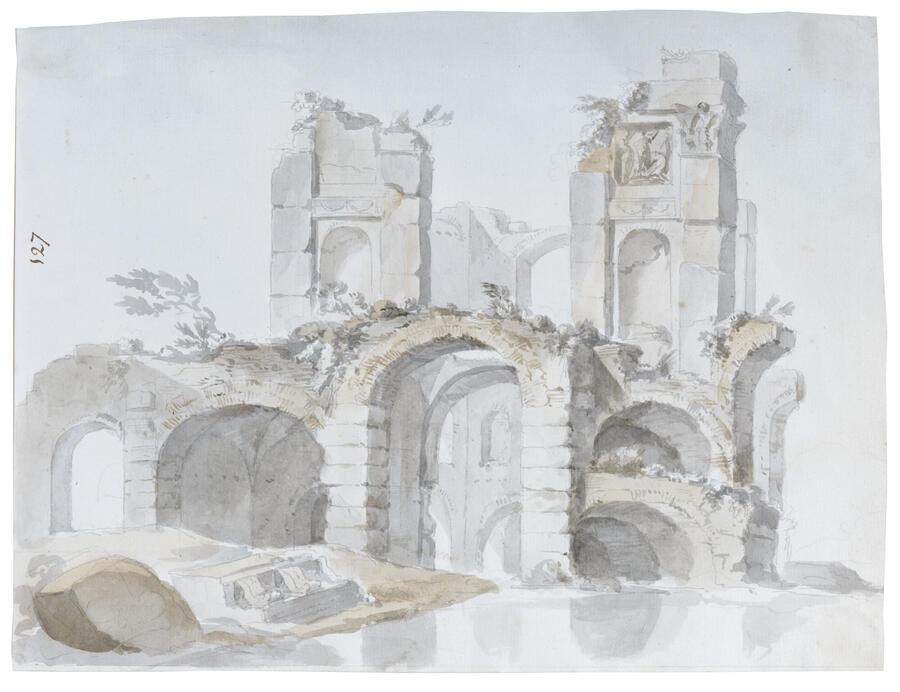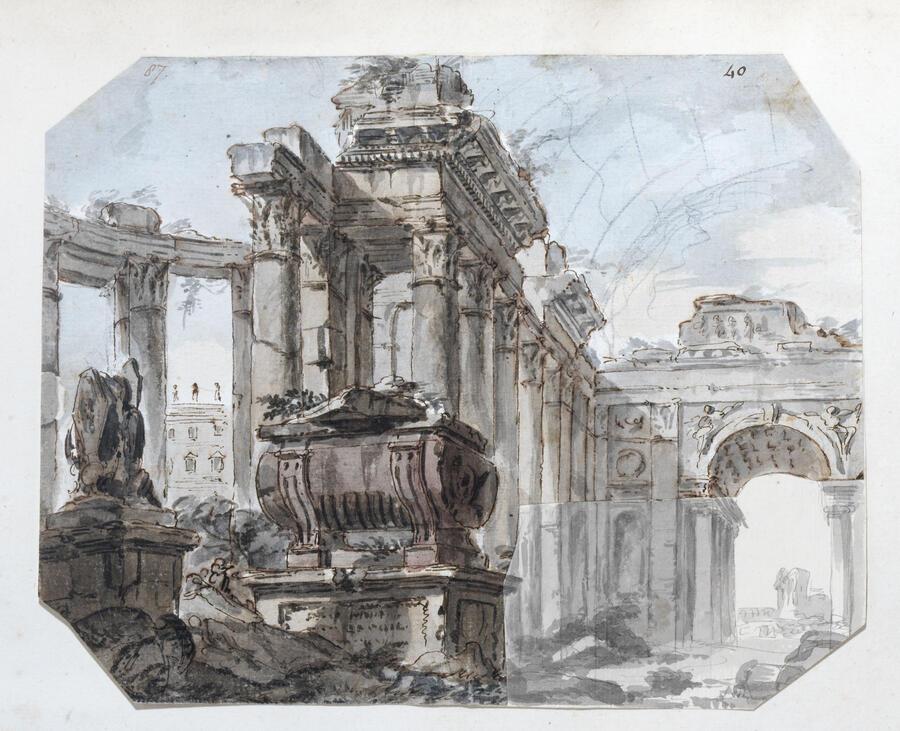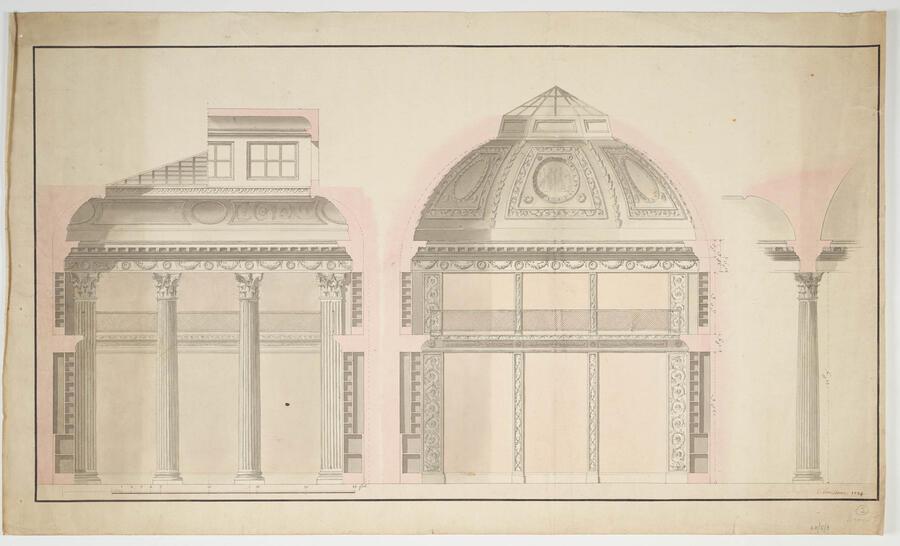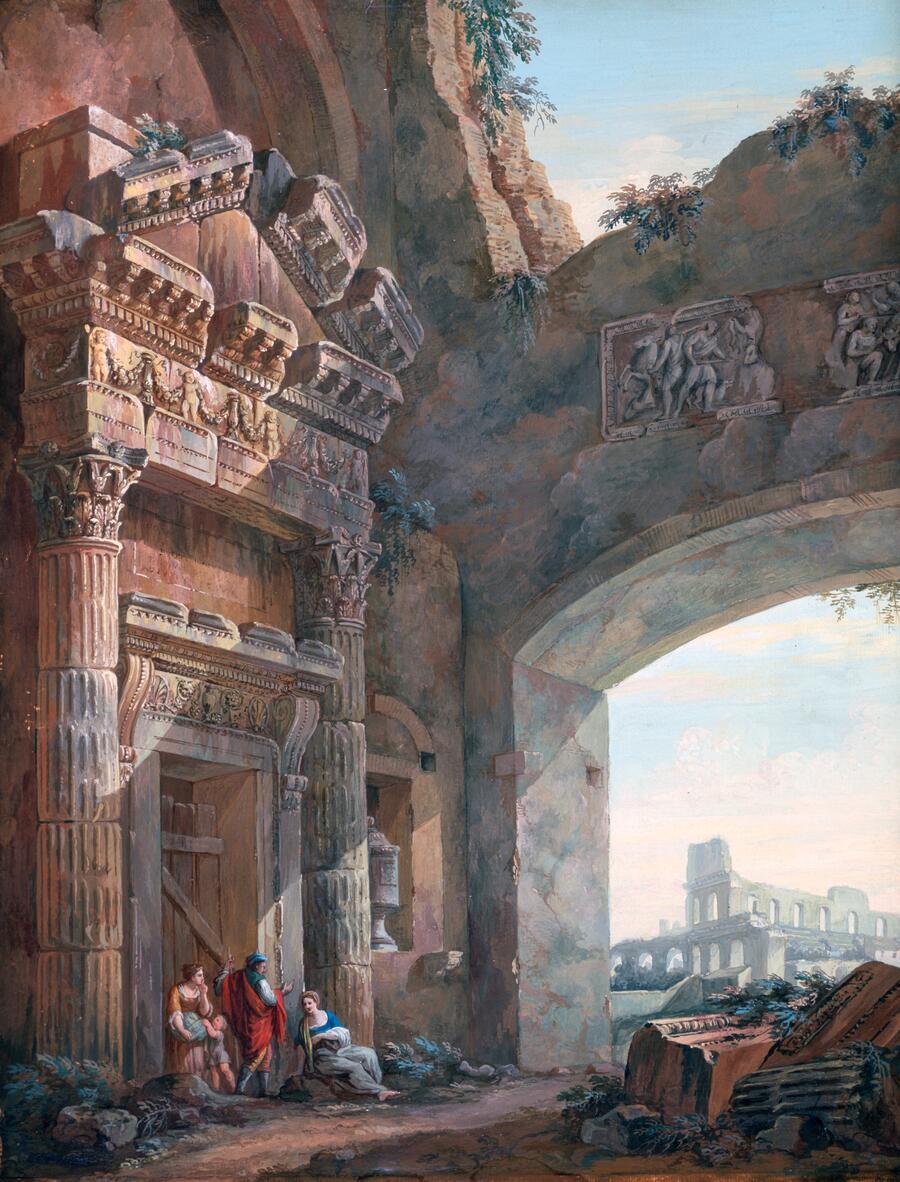Charles-Louis Clérisseau and Robert Adam, a pair of drawings showing the same unknown ruined tower, c.September 1755, SM Adam volume 57/123 and 57/127.
For a time in the 1750s Clérisseau and Robert Adam lived together at the Casa Guarnieri, near the Spanish Steps in Rome. It was here that Adam truly learned from Clérisseau to draw like a master architect. Adam’s letters attest to the fact that Clérisseau discouraged him from attempting architectural design until he was more fully conversant with the various ornamental motifs available to him, and was able to draw them with skill. Clérisseau’s teaching style evidently involved his pupil emulating his own work, and there are a number of examples of pairs of drawings of the same subject by Clérisseau and Adam, working side by side.
Clérisseau and Adam’s drawings from that time are principally in pencil, pen and watercolour, depicting either fictional capricci and ruinscapes, or recording architecture, fragments and ornamental motifs from the buildings they encountered throughout Italy. The latter appear to have generally been drawn in situ, displaying an intimate understanding of the antique architecture that they illustrated, albeit often employing Clérisseau’s well-documented distortions of perspective to show a piece of architecture to its best advantage. The drawings utilise Clérisseau’s characteristic mode of depicting architecture in solid lines of ink, but complement this with hazy watercolour backgrounds and topographies.
